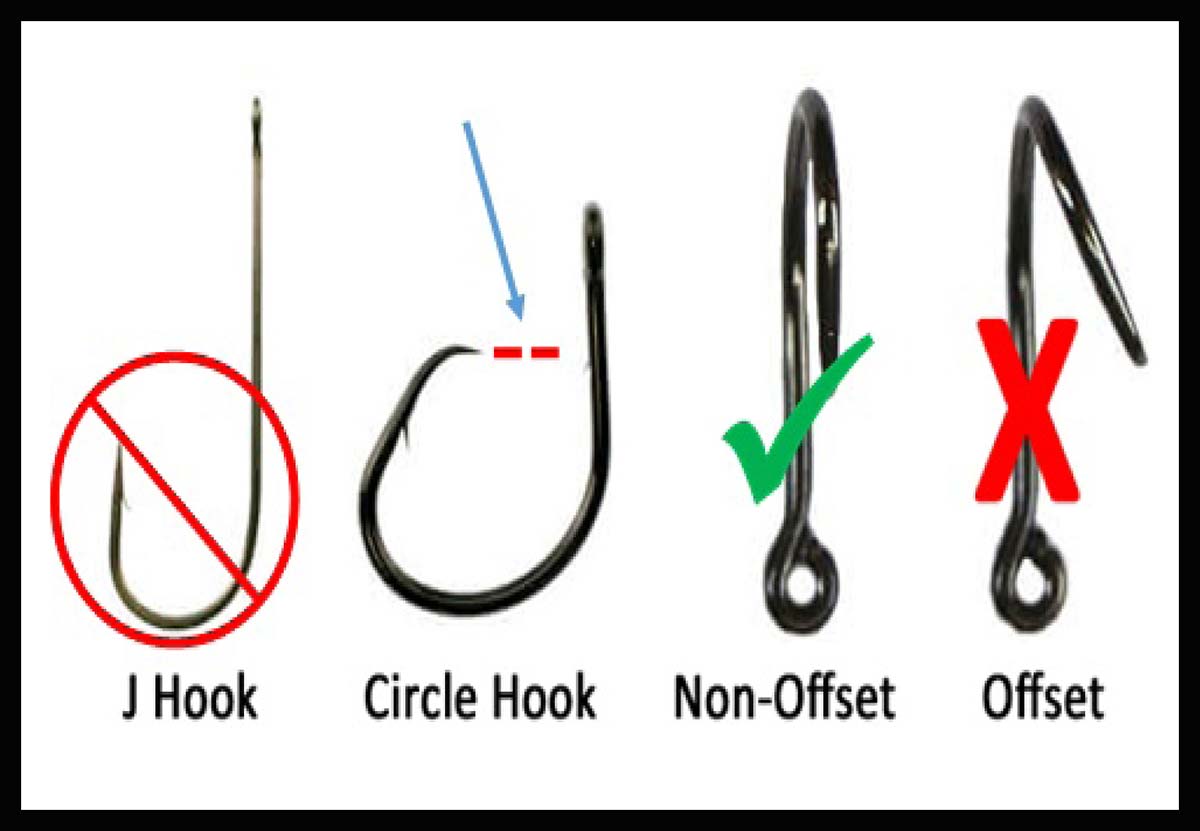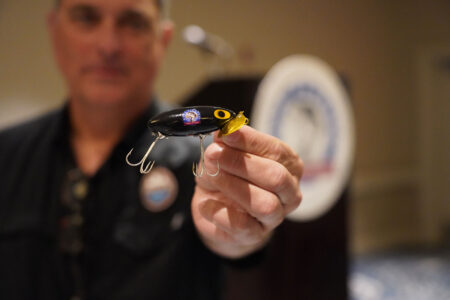Fishing for striped bass using natural baits? Make sure you’re using a non-offset, inline circle hook – it’s now officially a coastwide regulation, with no exception!
On October 21, 2020, the Atlantic Striped Bass Management Board (Board) of the Atlantic States Marine Fisheries Commission (ASMFC) met electronically as part of the 79th Annual Meeting to review the specifications for implementing the new circle hook requirement along the Atlantic coast.
Approved in October 2019, the change to the Atlantic Striped Bass Interstate Fishery Management Plan (FMP) implemented coastwide harvest reductions put in place in 2020, while also requiring the mandatory use of circle hooks when fishing with bait to reduce release mortality in recreational striped bass fisheries. As per the FMP, states are required to implement circle hook requirements by January 1, 2021.
At the October 21 meeting, each state provided its implementation plan complete with any requested exemptions for review and approval. While the proposed regulatory language varied slightly from state to state, at its core the meaning and intent was consistent across all proposals. The only states that submitted exemption requests were Maine, Massachusetts and the Potomac River Fisheries Commission (though the Potomac River Fisheries Commission subsequently withdrew its exemption request and modified its proposal for year-round circle hook requirement).

Maine asked that rubber or latex tube rigs be exempt from the circle hook restriction as long as they conform to the following: the lure must consist of a minimum of 8 inches of latex rubber tubing with a single hook protruding from the end portion of the tubing where bait may be attached. Use of treble hooks is not allowed with these rigs.
Massachusetts sought a circle hook exemption for anglers fishing onboard for-hire vessels; furthermore, Massachusetts asked that the circle hook requirement for shore-bound and private shall not apply to any artificial lure designed to be trolled, cast and retrieved, or vertically jigged with natural bait attached.
Prior to withdrawing their exemption request, the Potomac River Fisheries Commission sought to have the circle requirement not be required prior to May 1 during catch and release season (barbless hooks required).
A motion was made by Tom Fote (NJ) and seconded by Dennis Abbot (NH) to approve the implementation plans but to prohibit any states from gear or user exemptions. A motion to substitute was then made by Megan Ware (ME) to approve the implementation plans and exemptions with the exception of the Massachusetts for-hire exemption; it was seconded by Justin Davis (CT). After lengthy discussion, the motion failed by a count of five in favor (RI, ME, MA, DE, NC), eight opposed (DC, PA, NJ, VA, NH, NY, MD, VA, NC PRFC), one null (CT), and two abstains (USFWS, NMFS).
The original motion was then called and it passed with a vote of 15 in favor (ME, NH, MA, RI, NY, NJ, PA, DE, MD, DC, PRFC, VA, NC, NMFS, USFWS) and one opposed (CT) thereby approving and requiring the use of circle hooks by all recreational anglers when targeting striped bass with any kind of live or dead natural bait effective January 1, 2021. No exemptions were made for gear type or user groups and therefore this regulation includes shore-bound, private boat and anglers onboard for-hire vessels.
With no gear type exemptions allowed, the new circle hook requirement in place for 2021 includes but is not limited to such angling techniques as a tube and worm; eelskin rig; rigged eel; the addition of pork rind, squid, etc. to a bucktail jig; and any and all other scenarios where a natural bait is added to an artificial lure when targeting striped bass.
The FMP defines a ‘circle hook’ as a non-offset hook where the point is pointed perpendicularly back towards the shank. The term ‘non-offset’ means the point and barb are in the same plane as the shank (e.g., when the hook is laying on a flat surface, the entire hook and barb also lay flat).




